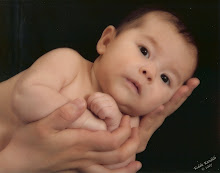Cause of Kawasaki disease remains a mystery
Cause of Kawasaki disease remains a mystery
Recent evidence suggests an infectious agent, although to date no organism has been found
Monday, February 02, 2009
Staten Island AdvanceSTATEN ISLAND, N.Y. -- Kawasaki disease is an acute, self-limited disease of unknown cause that has a tendency to affect the coronary arteries (the arteries supplying the heart). It predominantly affects infants and children. Kawasaki disease is an illness that involves the skin, mouth, and lymph nodes. It is associated with high fevers that last for five or more days.
The disease was first described in Japan in 1967 by Tomisaku Kawasaki; it is now known to occur in the Americas, Europe, and Asia in children of all races. Kawasaki disease is markedly more common in Japan and children of Japanese ethnicity, having an annual incidence of 150 cases per 100,000 children younger than 5 years of age. Recurrence rates approach 3 percent. About 1 percent of those with the disease have a family history. The risk of occurrence in twins is approximately 13 percent. These statistics suggest that genetic predisposition may play a role in who gets the disease. The cause of Kawasaki disease remains a mystery. All the recent evidence suggests an infectious agent, although to date no organism has been found. This disease occurs in phases. The first phase, which can last for up to two weeks, usually involves a persistent fever higher than 104 degrees Fahrenheit and lasts for at least five days. The second phase occurs two weeks after the fever begins, and the skin of the hands and feet may begin to peel in large pieces. The child may also experience joint pain, diarrhea, vomiting, or abdominal pain. Kawasaki disease is a generalized inflammation of blood vessels, affecting all blood vessels throughout the body, but preferentially affects the coronary arteries. DIAGNOSITC CRITERIA
Cause of Kawasaki disease remains a mystery - Page 2
Recent evidence suggests an infectious agent, although to date no organism has been foundThe diagnostic criteria for Kawasaki disease requires fever for at least five days; and four of the five following criteria: Bilateral Conjunctiva injection (blood-shot eyes). Changes of the mucous membranes of the upper respiratory tract: red pharynx, fissured or cracked lips, strawberry appearing tongue. Rash. Changes to the extremities (swelling, redness, skin peeling). Enlarged lymph nodes in the neck region. A sonogram (echocardiogram) is done as soon as the diagnosis is entertained to rule out any inflammation of the heart and to check for aneurysm formation of the coronary arteries. It is then done periodically to monitor the condition. If suspected of having this disease, treatment is started immediately with aspirin, and intravenous immunoglobulin. These both have anti-inflammatory effects. The sooner these medications are started, the less likely complications may occur. If a child is diagnosed with an aneurysm, aspirin is continued indefinitely to prevent rupture of the aneurysm or clot formation. Coronary artery aneurysms occur in 20 to 25 percent of untreated children. Resolution of aneurysms occurs in one to two years for approximately 50 percent of patients. Myocardial infarction (heart attack) caused by a clot in an abnormal coronary artery is the principal cause of death. The greatest risk occurs in the first year after diagnosis. INCOMPLETE FORM Recent evidence suggests there may be an incomplete form of Kawasaki disease occurring in some individuals. Some patients do not fulfill the clinical criteria for the disease and are diagnosed based on echocardiographic findings of coronary artery anomalies. Therefore, strict adherence to the diagnostic criteria may in fact miss some cases. So when should incomplete Kawasaki disease be considered? If a child has unexplained fever for five or more days associated with two or three of the diagnostic criteria mentioned above. Other diseases that may present in a similar manor include: measles, strep throat and drug hypersensitivity reactions. Kawasaki disease can be quite devastating. It is imperative to seek medical attention as soon as possible, as the earlier it is diagnosed the better the outcome. This column is provided by the Richmond County Medical Society. Dr. Messo is the immediate past president of Society. He maintains a private practice in Eltingville and is director of internal medicine/pediatric education at Richmond University Medical Center and an adjunct clinical professor at Touro College of Osteopathic Medicine in Harlem.
Saturday, May 2, 2009
Subscribe to:
Post Comments (Atom)




































No comments:
Post a Comment